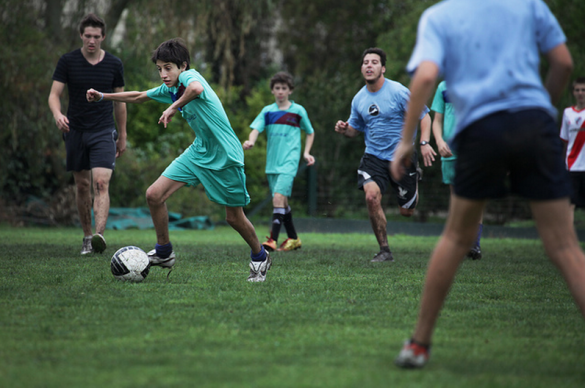As I write this, I'm waiting for our students to return from their weXplore, a five-day excursion that takes students beyond their host city for immersive cultural experiences. For the past two months, we as a school have called Maun, Botswana, our home. It's a small town on the edge of the Okavango Delta and, for many travelers, a doorway into Africa. But Maun is only one perspective, and it...
Read More FÚTBOL IS AN AMAZING TOOL for learning and understanding the Argentine identity. The students at TGS learned that three core ideas represent what it means to be Argentine: passion, independence and machismo. We applied these characteristics to fútbol, Tango, and the cultural icon of Argentina, the gaucho.
FÚTBOL IS AN AMAZING TOOL for learning and understanding the Argentine identity. The students at TGS learned that three core ideas represent what it means to be Argentine: passion, independence and machismo. We applied these characteristics to fútbol, Tango, and the cultural icon of Argentina, the gaucho.
Despite polo being the official national sport of Argentina, fútbol clearly is in the hearts and minds of every Argentine. Its lower and middle class roots make it accessible to all, whereas polo’s upper class nature makes it more of an elitist sport that only few have access to.
Students understood the cultural concepts of machismo and criollo fútbol on our two outings to matches at both Racing Club and River Plate stadiums. Machismo was evident in the vulgar chants and cheers that are directed at players of both teams. They also witnessed the idea of Criollo fútbol, which shows the individuality that Argentina brought to the game. The game was originally brought over to Argentina by English colonists who used the team sport as an education in manliness. The Argentines adapted the game to fit their culture of independence, which can still be seen in the style of play today.

On field trips to La Bombonera and El Monumental stadiums, the students gained the insider’s perspective into the two most important teams in Argentina, Boca Juniors and River Plate. They learned of the origin of both teams from the barrio of La Boca, the port area that was hustling and bustling with immigrants.
The origin of each team still can be seen in the way they play the game. La Boca’s team originated from immigrants from Italy, and the team still plays with Italian passion. Contrastingly, River Plate, with its upper-class roots, plays a more sophisticated version of the sport.
In 1923, both teams competed to see who could remain in La Boca, and River Plate lost, requiring them to move to the upper-class neighbourhood of Núñez. Our unit on Argentine fútbol was designed to end upon the biggest day of Argentine fútbol, the Superclásico, which was played on October 27, 2012 between the Boca Juniors and River Plate.
This year’s Superclásico ended in a 2-2 tie, which left the students continuing to debate which team is better, a question that is argued on the streets of Buenos Aires daily!
The students used their knowledge from the games, stadiums, and the museums of both teams to add to their on-going Argentine identity projects, which cover fútbol, Tango, and the gaucho. You can find these final products on the Spot tag dashboard “Argentine Identity projects.”